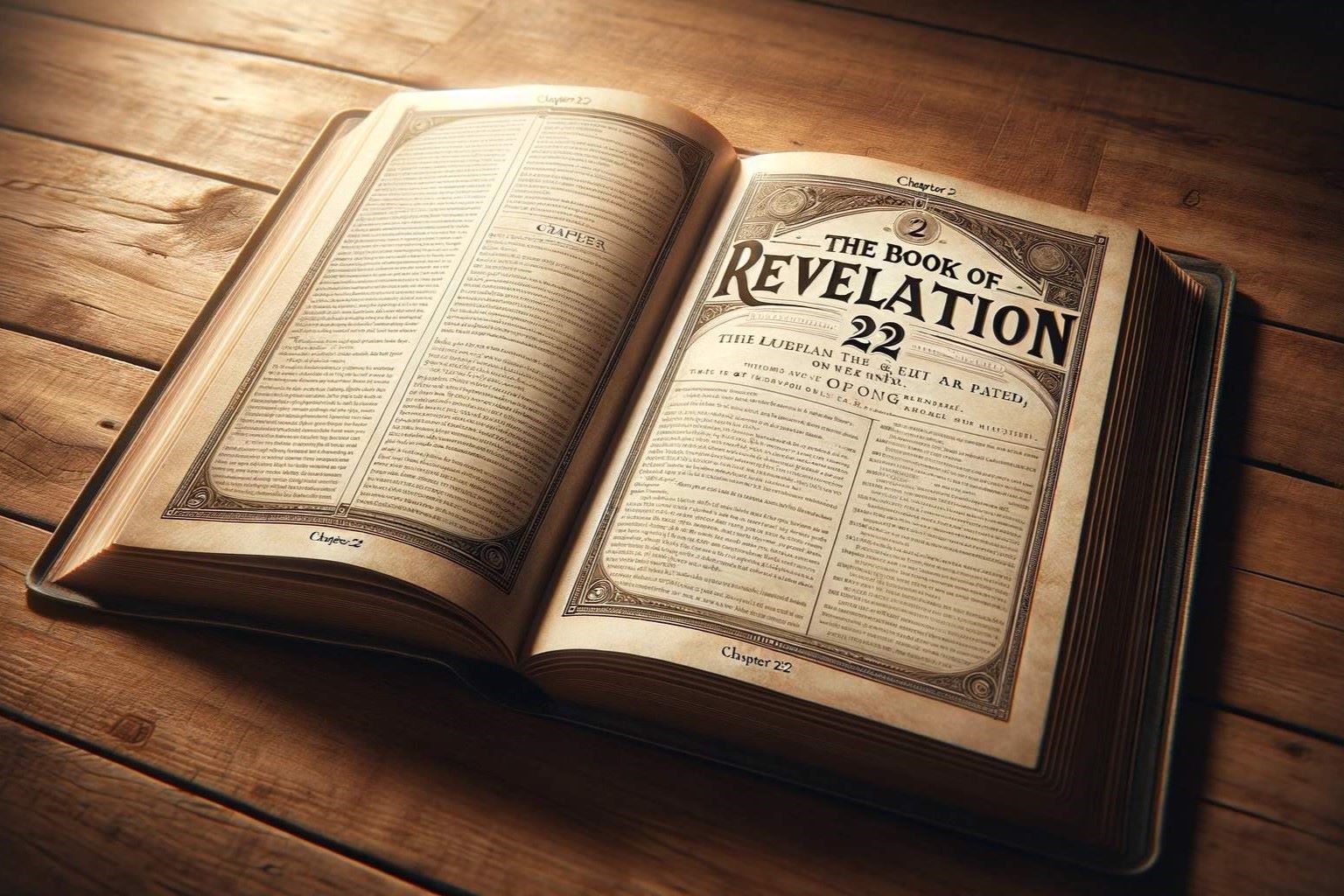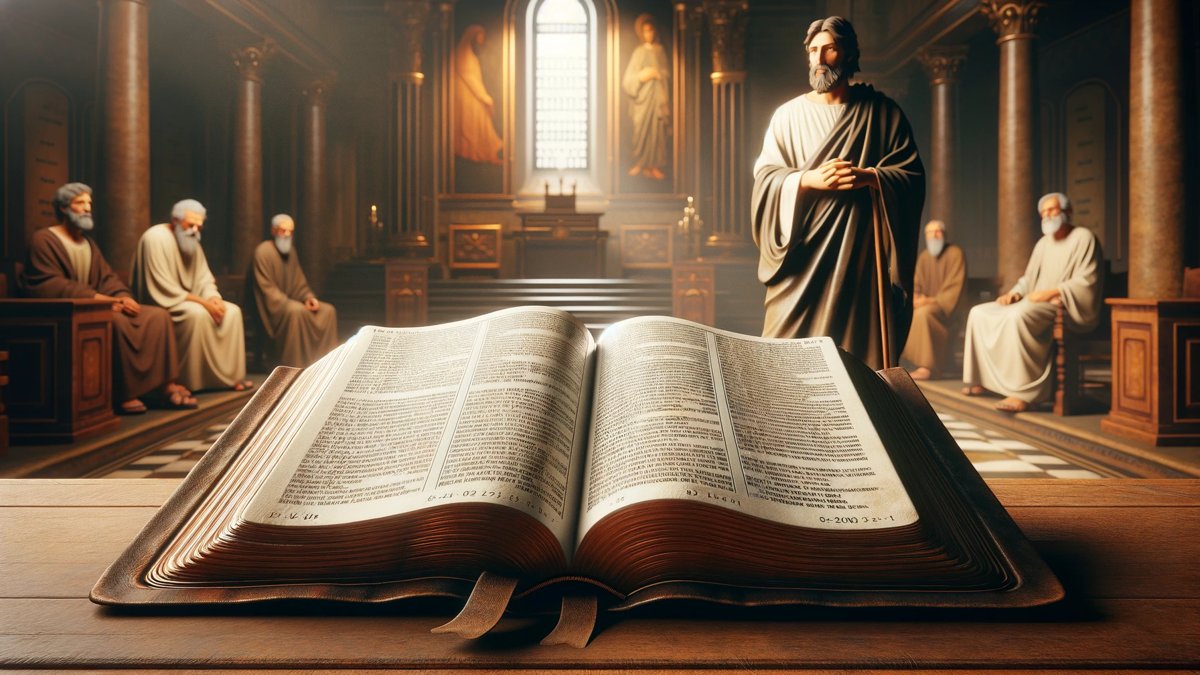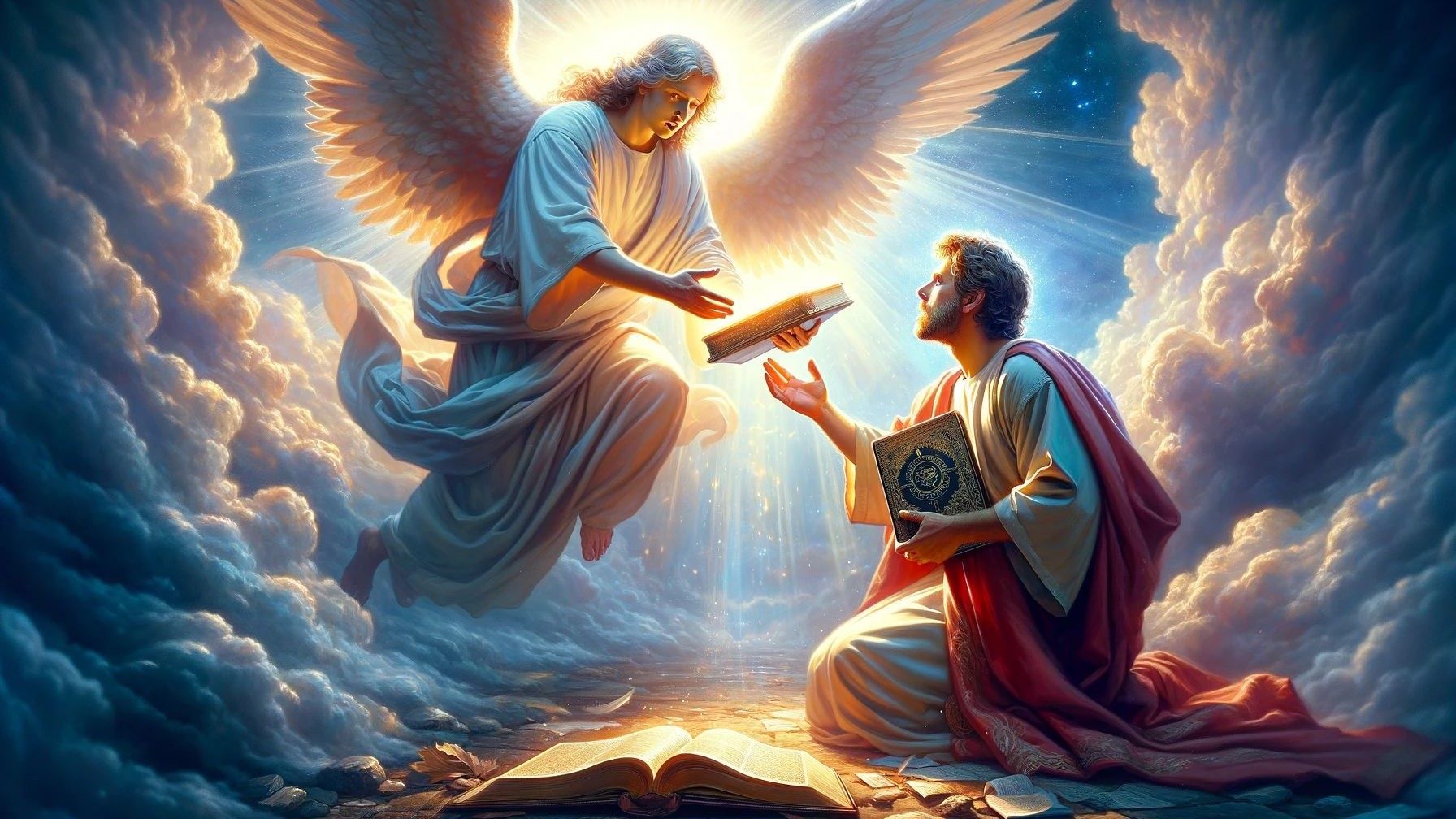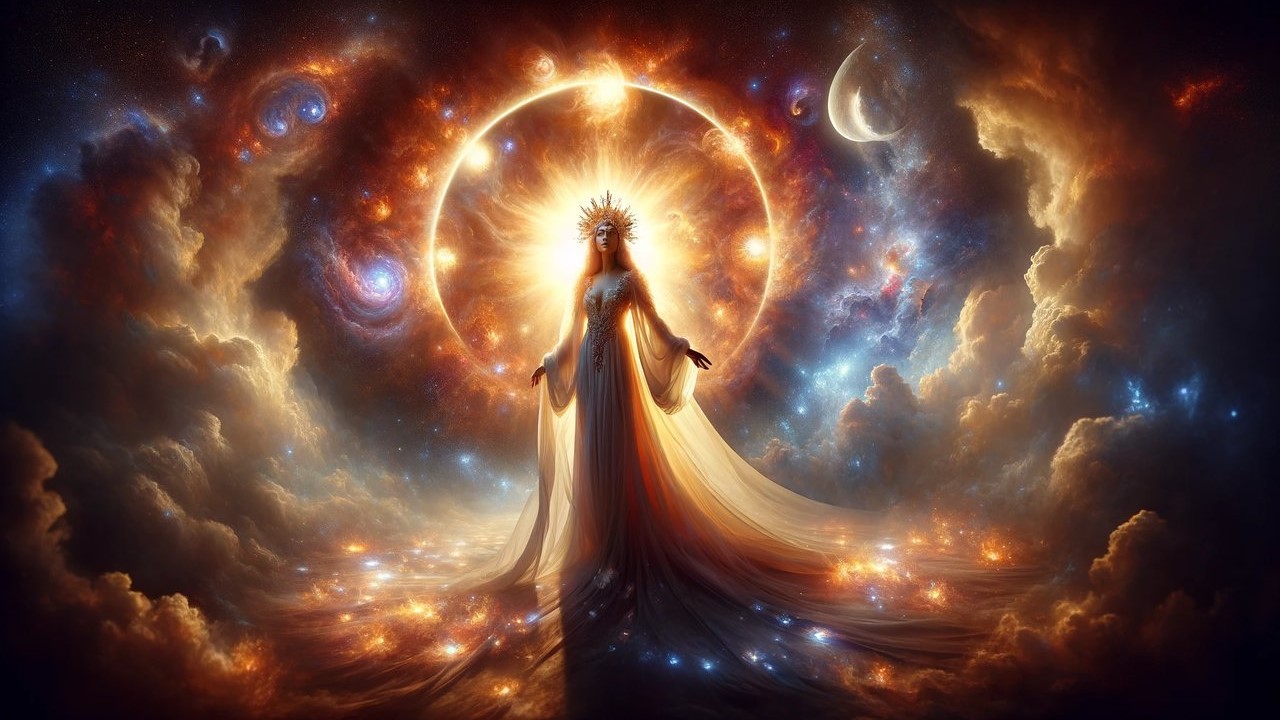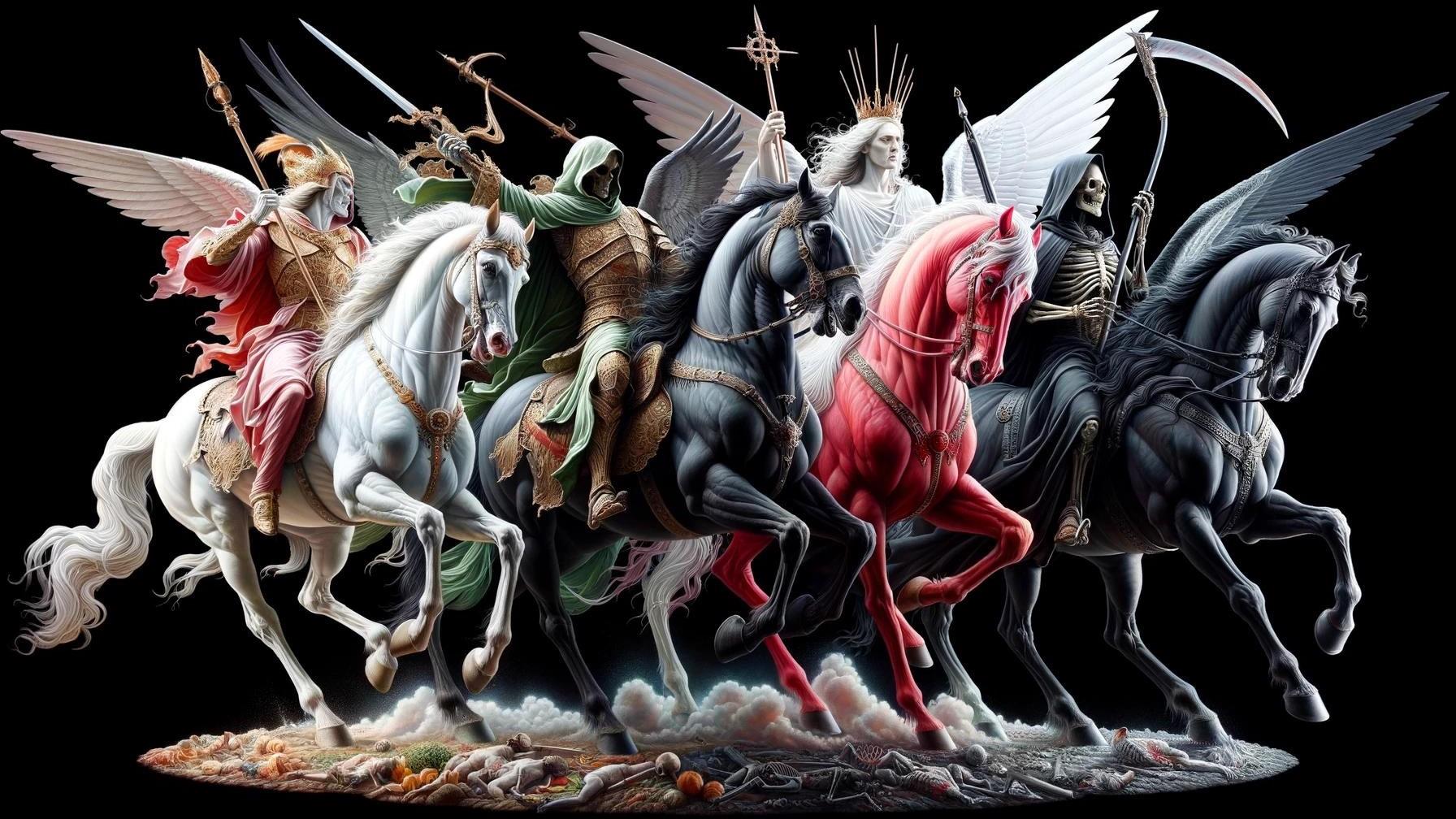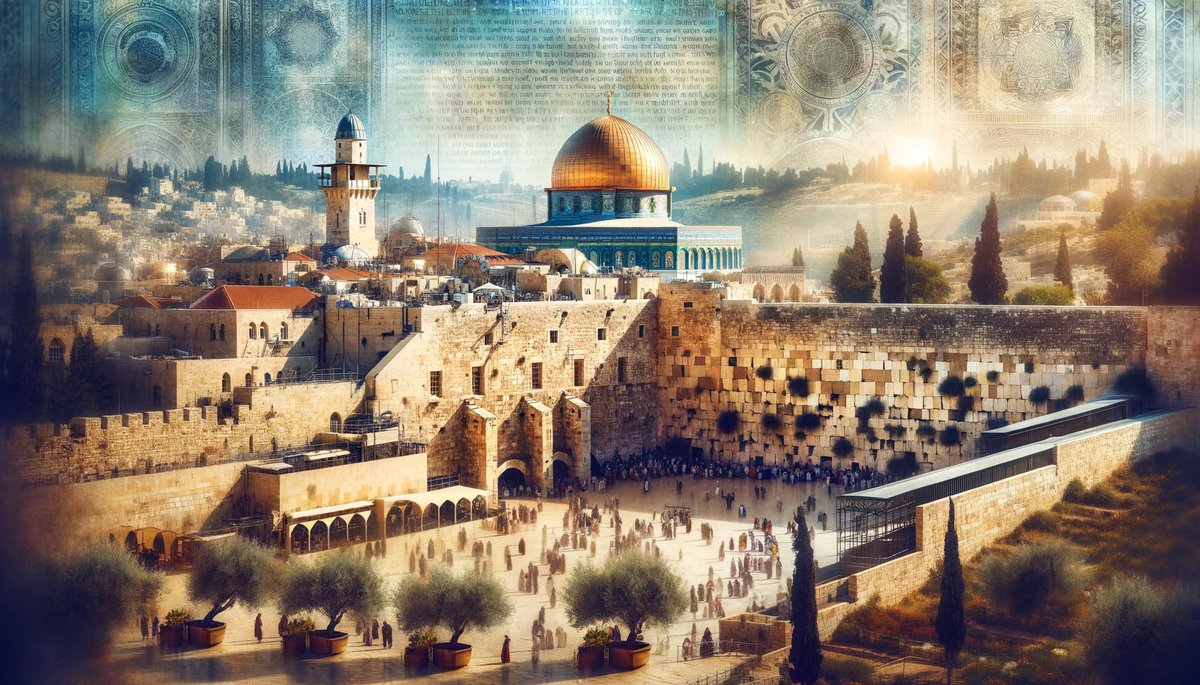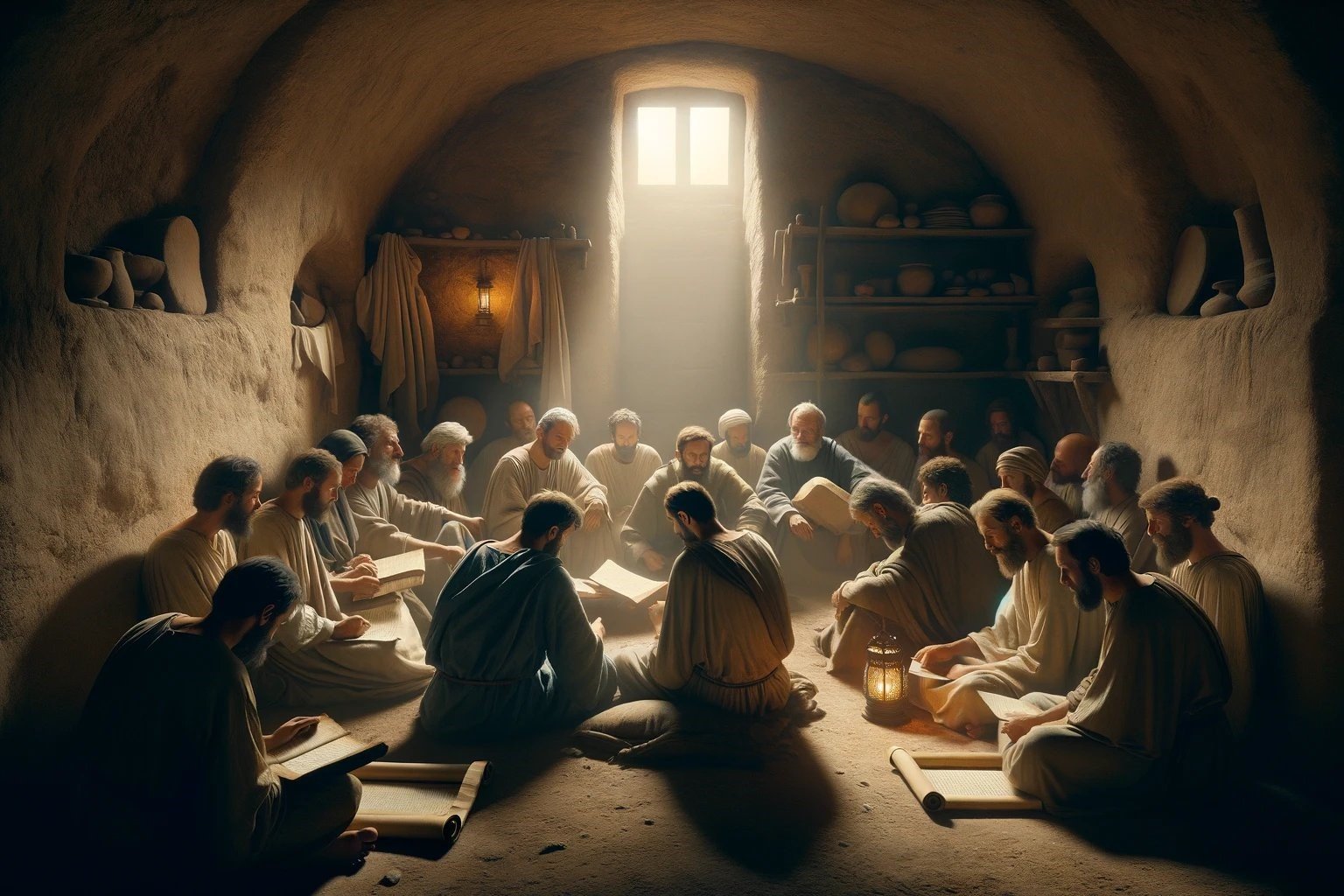Home>Bible Facts>What Did John See In The Book Of Revelation
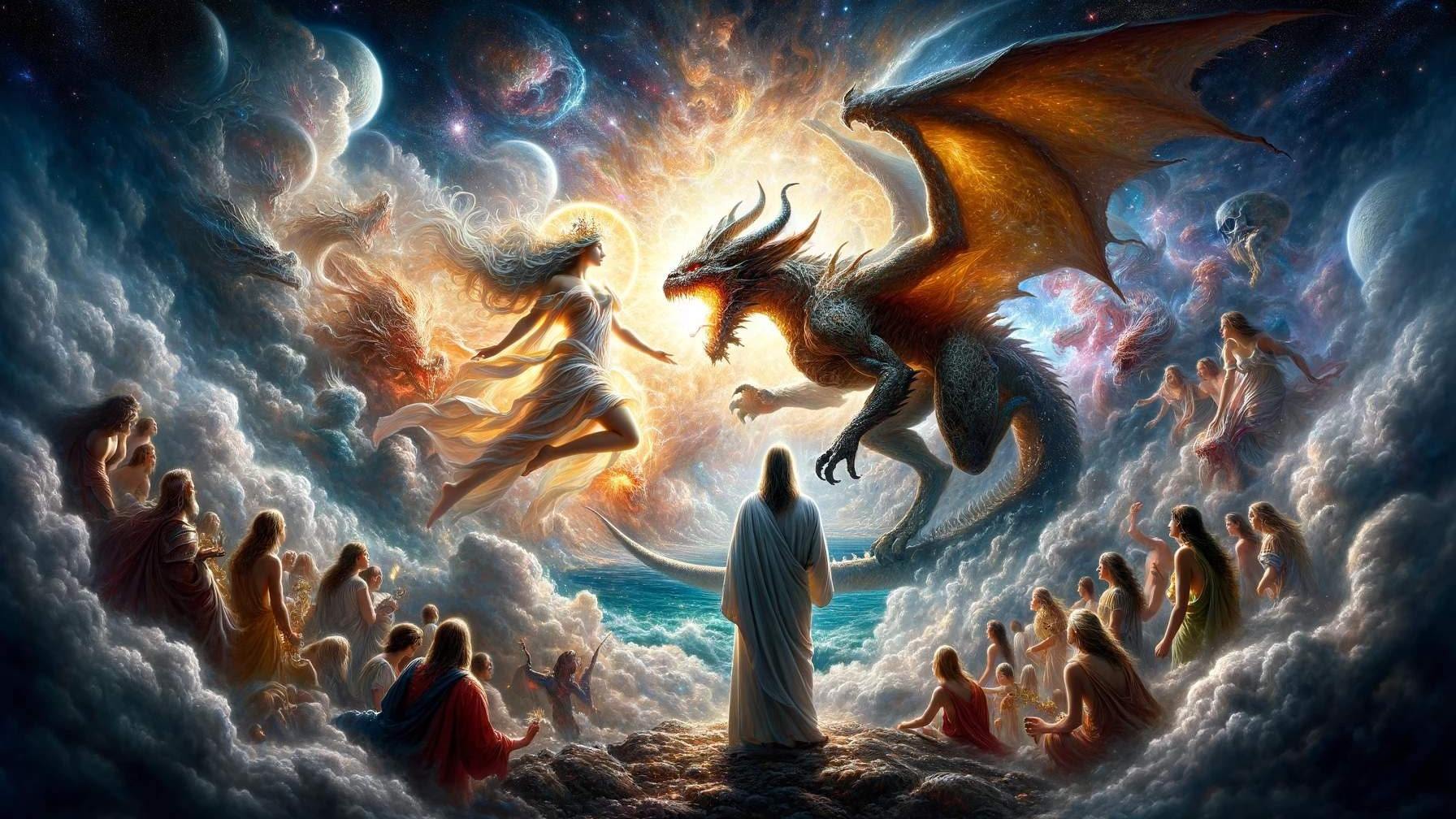

Bible Facts
What Did John See In The Book Of Revelation
Published: February 11, 2024
Jason DeRose, Managing Editor at Christian.net, uses his expertise in religion and journalism to deepen understanding of faith's societal impacts. His editorial leadership, coupled with a strong academic background, enriches the platform’s diverse content, earning him recognition in both journalism and religious circles.
Discover fascinating Bible facts as John's visions in the Book of Revelation unfold, revealing profound insights and prophecies. Explore the mysteries of the apocalypse and gain a deeper understanding of biblical truths.
(Many of the links in this article redirect to a specific reviewed product. Your purchase of these products through affiliate links helps to generate commission for Christian.net, at no extra cost. Learn more)
Table of Contents
Introduction
The Book of Revelation, also known as the Apocalypse of John, is the final book of the New Testament. It is a profound and enigmatic work that has captivated readers for centuries. The author, traditionally believed to be the apostle John, provides a vivid account of a series of apocalyptic visions that offer insight into the ultimate triumph of good over evil and the establishment of God's eternal kingdom.
Revelation is a unique and complex book, filled with rich symbolism and imagery that has sparked intense debate and speculation among theologians, scholars, and believers. Its apocalyptic nature sets it apart from the other books of the New Testament, as it delves into eschatological themes, unveiling the ultimate destiny of humanity and the cosmic battle between the forces of light and darkness.
The book opens with a powerful prologue, setting the stage for the dramatic visions that follow. John, exiled on the island of Patmos, receives a divine revelation from Jesus Christ, who instructs him to write down what he sees and send it to the seven churches in Asia. This directive underscores the prophetic nature of the book and its relevance to the early Christian communities.
As the narrative unfolds, John describes a series of awe-inspiring visions that convey profound spiritual truths and unveil the unfolding of God's divine plan for the world. The imagery is striking and at times surreal, depicting heavenly scenes, celestial beings, and cosmic events that transcend the boundaries of human understanding.
The Book of Revelation serves as a powerful reminder of the sovereignty of God and the ultimate fulfillment of His redemptive purposes. It offers hope and encouragement to believers, assuring them of the ultimate victory of Christ and the ultimate restoration of all things.
In the subsequent sections, we will delve into the intricate tapestry of symbolism and prophecy woven throughout the book, exploring the profound significance of the seven churches, the seven seals, the seven trumpets, the woman and the dragon, the beast from the sea, the mark of the beast, the seven bowls of God's wrath, the fall of Babylon, and the promise of the new heaven and new earth. Through this journey, we will gain a deeper understanding of the timeless truths embedded in the Book of Revelation and its enduring relevance for believers today.
The Seven Churches
The Book of Revelation begins with a compelling portrayal of the seven churches in Asia, each addressed in individual letters dictated by Jesus Christ and conveyed by the apostle John. These seven churches—Ephesus, Smyrna, Pergamum, Thyatira, Sardis, Philadelphia, and Laodicea—were actual congregations in the first-century Christian community, but their significance extends far beyond their historical context. They symbolize the universal church and embody timeless spiritual conditions and challenges that continue to resonate with believers today.
The letters to the seven churches are characterized by a pattern that includes commendation, rebuke, and exhortation, reflecting the spiritual state of each congregation. The church in Ephesus is commended for its perseverance and discernment but is admonished for forsaking its first love. Smyrna, facing persecution and poverty, is encouraged to remain faithful in the face of suffering. Pergamum is reprimanded for tolerating false teachings and immorality, while Thyatira is cautioned against the influence of a false prophetess. Sardis, though known for its reputation, is urged to wake up and strengthen what remains. Philadelphia, characterized by its endurance and faithfulness, is promised protection and vindication. Laodicea, criticized for its lukewarmness, is exhorted to repent and embrace genuine spiritual wealth.
The letters to the seven churches serve as a poignant reminder of the enduring relevance of the book's message. They offer timeless insights into the spiritual dynamics of the church, addressing issues of faithfulness, perseverance, discernment, and the perils of compromise. Moreover, they underscore the universal nature of the challenges faced by believers and the enduring relevance of Christ's exhortations to His followers.
The symbolic significance of the seven churches extends beyond their historical context, serving as a mirror for self-examination and a call to spiritual renewal for believers in every age. The messages to these churches resonate with themes of repentance, faithfulness, perseverance, and wholehearted devotion to Christ, offering profound insights into the spiritual dynamics of the church and the enduring relevance of Christ's exhortations to His followers.
In the subsequent sections, we will explore the intricate tapestry of symbolism and prophecy woven throughout the Book of Revelation, delving into the profound significance of the seven seals, the seven trumpets, the woman and the dragon, the beast from the sea, the mark of the beast, the seven bowls of God's wrath, the fall of Babylon, and the promise of the new heaven and new earth. Through this journey, we will gain a deeper understanding of the timeless truths embedded in the book and its enduring relevance for believers today.
The Seven Seals
The Book of Revelation introduces a series of profound and mysterious visions centered around the opening of seven seals. These seals, depicted as scrolls secured with seven seals, represent the unfolding of God's divine plan for the world and the revelation of significant events that will shape the course of human history. As the Lamb of God, who is worthy to open the seals, breaks each one in succession, a new aspect of God's redemptive purposes is unveiled, setting in motion a sequence of cosmic events that culminate in the ultimate triumph of good over evil.
The opening of the first four seals reveals the Four Horsemen of the Apocalypse, each representing a distinct aspect of divine judgment and the human experience. The first horseman, riding a white horse, symbolizes conquest and the spread of false ideologies. The red horseman signifies war and bloodshed, while the black horseman represents famine and scarcity. The pale horseman, embodying death and Hades, brings about widespread devastation and mortality. These vivid symbols convey the profound impact of these forces on the world and the human condition.
The opening of the fifth seal unveils the souls of martyrs crying out for justice, highlighting the reality of persecution and the ultimate vindication of those who have suffered for their faith. This poignant imagery underscores the enduring significance of martyrdom and the assurance of divine justice for those who have endured suffering for the sake of their faith.
The sixth seal's opening heralds cataclysmic cosmic disturbances, including earthquakes, darkened sun, blood-red moon, and falling stars. These awe-inspiring events signal the impending day of God's wrath and the cosmic upheaval preceding the final judgment. The dramatic imagery conveys the magnitude of these apocalyptic events and their profound impact on the world.
The seventh seal, when opened, gives way to a profound silence in heaven, signifying the anticipation of the impending judgments and the culmination of God's redemptive plan. This solemn pause sets the stage for the subsequent series of trumpet judgments, further unfolding the divine drama that will ultimately lead to the establishment of God's eternal kingdom.
The unveiling of the seven seals in the Book of Revelation serves as a powerful reminder of the sovereignty of God and the ultimate fulfillment of His redemptive purposes. It offers profound insights into the unfolding of divine judgment, the assurance of justice, and the ultimate triumph of good over evil. These timeless truths continue to resonate with believers, inspiring hope and fortifying their faith in the face of the cosmic forces at play in the world.
The Seven Trumpets
The Book of Revelation unfolds a series of awe-inspiring visions that revolve around the sounding of seven trumpets, each heralding significant events that shape the course of human history and divine judgment. As the seven angels prepare to sound their trumpets, the cosmic drama intensifies, unleashing a sequence of cataclysmic events that underscore the profound impact of divine judgment on the world.
The sounding of the first trumpet brings forth hail and fire mingled with blood, casting a third of the earth, trees, and grass into turmoil. This vivid imagery conveys the devastating impact of natural disasters and the disruption of the earth's ecosystems, signaling the onset of divine judgment and the upheaval of the natural order.
The second trumpet heralds a great mountain burning with fire cast into the sea, turning a third of the sea into blood and causing the death of a third of the living creatures in the sea. This cataclysmic event underscores the magnitude of ecological devastation and the far-reaching consequences of divine judgment on the seas and marine life.
The sounding of the third trumpet results in a great star, blazing like a torch, falling from the sky and contaminating a third of the rivers and springs with bitterness. This vivid imagery portrays the contamination of freshwater sources, highlighting the pervasive impact of divine judgment on the earth's essential resources and the disruption of the natural order.
The fourth trumpet unleashes cosmic disturbances, darkening a third of the sun, moon, and stars, casting the world into a state of celestial turmoil. This dramatic imagery conveys the magnitude of cosmic upheaval and the profound impact of divine judgment on the celestial realms, signaling the impending day of God's wrath and the cosmic upheaval preceding the final judgment.
The sounding of the fifth trumpet unveils the release of locust-like creatures with the power to torment those who do not have the seal of God on their foreheads. This haunting imagery underscores the reality of spiritual torment and the consequences of rejecting God's redemptive grace, serving as a poignant reminder of the ultimate destiny of those who persist in rebellion against divine truth.
The sixth trumpet heralds the release of four angels bound at the great river Euphrates, unleashing a vast army of horsemen who bring about widespread devastation and death. This vivid portrayal underscores the magnitude of divine judgment and the cataclysmic events that culminate in the ultimate triumph of good over evil, setting the stage for the final unfolding of God's redemptive plan.
The sounding of the seventh trumpet marks the culmination of the divine drama, unleashing heavenly voices proclaiming the reign of God and the establishment of His eternal kingdom. This triumphant proclamation underscores the ultimate victory of good over evil and the fulfillment of God's redemptive purposes, offering hope and assurance to believers as they await the consummation of all things.
The unveiling of the seven trumpets in the Book of Revelation serves as a powerful reminder of the sovereignty of God and the ultimate fulfillment of His redemptive purposes. It offers profound insights into the unfolding of divine judgment, the assurance of justice, and the ultimate triumph of good over evil. These timeless truths continue to resonate with believers, inspiring hope and fortifying their faith in the face of the cosmic forces at play in the world.
The Woman and the Dragon
The Book of Revelation presents a captivating and symbolic narrative depicting the cosmic conflict between good and evil through the imagery of a woman and a dragon. In this profound vision, a great sign appears in heaven: a woman clothed with the sun, with the moon under her feet, and a crown of twelve stars on her head. This radiant woman symbolizes the people of God, often interpreted as the faithful remnant of Israel or the church, adorned with divine favor and authority.
Adjacent to the woman, a colossal red dragon with seven heads, ten horns, and seven crowns on its heads emerges, ready to devour the woman's child as soon as it is born. This malevolent dragon represents the forces of evil, often associated with Satan or the embodiment of opposition to God's redemptive plan. The impending birth of the woman's child, who is destined to rule all nations with a rod of iron, signifies the arrival of the Messiah, Jesus Christ, who will ultimately triumph over the forces of darkness.
As the dragon seeks to thwart the fulfillment of God's redemptive plan, a celestial battle ensues, culminating in the expulsion of the dragon and its angels from heaven. This dramatic conflict underscores the cosmic struggle between the forces of light and darkness, portraying the ultimate victory of God and His chosen Messiah over the powers of evil.
The woman, protected by divine intervention, flees to a place prepared for her in the wilderness, where she is nourished and safeguarded from the dragon's wrath. This imagery conveys the providential care and protection afforded to God's people amidst the trials and tribulations they encounter in the world.
The vision of the woman and the dragon in the Book of Revelation serves as a powerful allegory, portraying the enduring conflict between the kingdom of God and the forces of darkness. It offers profound insights into the cosmic drama unfolding in the spiritual realm, highlighting the ultimate triumph of God's redemptive purposes and the assurance of His protection for His faithful followers.
This vivid portrayal of the woman and the dragon underscores the timeless truths embedded in the Book of Revelation, offering believers a compelling vision of the cosmic battle between good and evil and the ultimate victory of God's redemptive plan.
Read more: What Is Babylon In The Book Of Revelation
The Beast from the Sea
The Book of Revelation unveils a striking vision of a beast rising from the sea, a powerful and enigmatic symbol that embodies the forces of evil and oppression in the cosmic drama depicted in the apocalyptic narrative. This fearsome beast, described as having seven heads and ten horns, emerges from the turbulent waters, evoking a sense of dread and foreboding as it asserts its dominance over the world.
The beast's appearance mirrors the description of the dragon, signaling its malevolent nature and its alignment with the forces of darkness. Its seven heads and ten horns signify its authority and dominion, reflecting its formidable power and influence over the affairs of humanity. The blasphemous names adorning the beast further underscore its defiance of divine authority and its opposition to the redemptive purposes of God.
As the narrative unfolds, the beast is granted authority and a position of influence, evoking awe and allegiance from the inhabitants of the earth. Its portrayal as a seemingly invincible force exerts a pervasive and oppressive influence, captivating the imagination and allegiance of those who dwell on the earth. The beast's ascendancy embodies the embodiment of tyranny and persecution, wielding its power to subjugate and oppress those who refuse to yield to its authority.
The beast's emergence from the sea signifies the tumultuous and chaotic origins of its dominion, reflecting the disruptive and tumultuous nature of its rule. The sea, often symbolizing primordial chaos and the forces of darkness, serves as a fitting backdrop for the ascent of this malevolent entity, highlighting the pervasive and disruptive impact of its influence on the world.
The portrayal of the beast from the sea in the Book of Revelation serves as a powerful allegory, depicting the oppressive and tyrannical forces that seek to undermine God's redemptive plan and subjugate humanity. Its ominous presence and pervasive influence underscore the enduring struggle between the forces of light and darkness, offering profound insights into the cosmic battle between good and evil.
This vivid portrayal of the beast from the sea underscores the timeless truths embedded in the Book of Revelation, offering believers a compelling vision of the cosmic conflict between the kingdom of God and the forces of darkness. It serves as a poignant reminder of the ultimate triumph of God's redemptive plan and the assurance of His ultimate victory over the forces of evil.
The Mark of the Beast
The Book of Revelation introduces a profound and enigmatic symbol known as the "mark of the beast," a distinctive emblem that embodies the oppressive and malevolent forces at play in the cosmic drama depicted in the apocalyptic narrative. This ominous mark, often associated with the number 666, represents the allegiance and submission to the tyrannical system orchestrated by the beast from the sea, symbolizing the pervasive influence of evil and the subjugation of humanity under its dominion.
The mark of the beast serves as a stark contrast to the seal of God, symbolizing the faithful allegiance and divine protection afforded to those who belong to God. Those who receive the mark of the beast succumb to the pressures of conformity and compromise, yielding to the coercive demands of the oppressive system. This emblematic mark signifies a forfeiture of spiritual autonomy and a capitulation to the forces of darkness, reflecting the insidious nature of the beast's influence on the world.
The consequences of receiving the mark of the beast are dire, as it represents a decisive alignment with the oppressive forces opposed to God's redemptive plan. Those who bear this mark are subjected to divine judgment and exclusion from the redemptive blessings reserved for the faithful. The mark of the beast embodies the ultimate test of allegiance, compelling individuals to choose between conformity to the world's oppressive systems and unwavering fidelity to God's truth.
The symbolism of the mark of the beast underscores the enduring struggle between the kingdom of God and the forces of darkness, portraying the pervasive influence of evil and the spiritual peril faced by those who succumb to its allure. This profound imagery serves as a poignant reminder of the spiritual realities at play in the world, challenging believers to remain steadfast in their faith and resolute in their allegiance to God.
The mark of the beast serves as a powerful allegory, conveying profound insights into the cosmic battle between good and evil and the enduring relevance of the book's message for believers today. It underscores the ultimate triumph of God's redemptive plan and the assurance of His ultimate victory over the forces of darkness, offering hope and fortifying the faith of believers as they navigate the spiritual challenges of the world.
The Seven Bowls of God's Wrath
The Book of Revelation unveils a series of profound and cataclysmic events known as the seven bowls of God's wrath, representing the culmination of divine judgment and the outpouring of God's righteous indignation upon the earth. These symbolic bowls, filled with the wrath of God, serve as harbingers of apocalyptic devastation, unleashing a sequence of unprecedented plagues and calamities that underscore the magnitude of divine judgment and the impending consummation of God's redemptive plan.
The first bowl brings forth malignant sores upon those who bear the mark of the beast and worship its image, inflicting agonizing afflictions upon the unrepentant followers of the oppressive system orchestrated by the forces of darkness. This vivid imagery conveys the punitive consequences of aligning with the forces of evil and the spiritual peril faced by those who yield to its coercive influence.
The second bowl unleashes a devastating judgment upon the seas, turning them into blood and causing the death of every living creature in the sea. This cataclysmic event underscores the pervasive impact of divine judgment on the earth's ecosystems, signaling the disruption of the natural order and the far-reaching consequences of rebellion against God's redemptive truth.
The third bowl results in the contamination of freshwater sources, turning rivers and springs into blood. This symbolic plague highlights the pervasive impact of divine judgment on the essential resources of the earth, underscoring the disruptive and devastating consequences of defying God's redemptive purposes.
The fourth bowl heralds the scorching of the sun, inflicting intense heat upon the earth and its inhabitants. This dramatic judgment underscores the magnitude of ecological devastation and the disruptive impact of divine judgment on the natural elements, signaling the impending day of God's wrath and the cosmic upheaval preceding the final judgment.
The fifth bowl brings darkness upon the kingdom of the beast, plunging it into a state of pervasive spiritual and moral decay. This symbolic plague underscores the consequences of embracing the oppressive and tyrannical systems opposed to God's redemptive plan, highlighting the spiritual peril faced by those who yield to the allure of evil.
The sixth bowl results in the drying up of the Euphrates River, preparing the way for the kings of the east. This dramatic imagery signifies the unfolding of divine providence and the preparation for the ultimate confrontation between the forces of light and darkness, setting the stage for the final unfolding of God's redemptive plan.
The seventh bowl culminates in cataclysmic upheaval, unleashing unprecedented cosmic disturbances and devastating earthquakes that shake the foundations of the earth. This awe-inspiring judgment underscores the magnitude of divine wrath and the impending consummation of God's redemptive purposes, signaling the ultimate triumph of good over evil and the establishment of God's eternal kingdom.
The unveiling of the seven bowls of God's wrath in the Book of Revelation serves as a powerful reminder of the sovereignty of God and the ultimate fulfillment of His redemptive purposes. It offers profound insights into the unfolding of divine judgment, the assurance of justice, and the ultimate triumph of good over evil. These timeless truths continue to resonate with believers, inspiring hope and fortifying their faith in the face of the cosmic forces at play in the world.
The Fall of Babylon
The Book of Revelation unveils a profound and dramatic depiction of the fall of Babylon, a symbolic representation of the oppressive and corrupt systems that stand in opposition to God's redemptive plan. Babylon, throughout biblical literature, embodies the epitome of human rebellion against divine authority and the embodiment of spiritual idolatry and moral decadence. In the apocalyptic narrative, the fall of Babylon signifies the ultimate judgment and overthrow of all that opposes the sovereignty of God and His redemptive purposes.
The imagery of Babylon's fall in the Book of Revelation portrays the catastrophic and irreversible nature of its demise, symbolizing the decisive and irrevocable judgment that befalls all manifestations of spiritual rebellion and moral depravity. The fall of Babylon serves as a poignant reminder of the inevitable consequences of defying God's truth and embracing the seductive allure of worldly power and materialism.
The symbolic portrayal of Babylon's fall underscores the enduring struggle between the kingdom of God and the forces of darkness, highlighting the pervasive influence of evil and the spiritual peril faced by those who yield to its coercive allure. The apocalyptic vision of Babylon's fall serves as a powerful allegory, conveying profound insights into the cosmic battle between good and evil and the enduring relevance of the book's message for believers today.
The fall of Babylon in the Book of Revelation serves as a powerful reminder of the sovereignty of God and the ultimate fulfillment of His redemptive purposes. It offers profound insights into the unfolding of divine judgment, the assurance of justice, and the ultimate triumph of good over evil. These timeless truths continue to resonate with believers, inspiring hope and fortifying their faith in the face of the cosmic forces at play in the world.
Read more: What Book Did John The Baptist Write
The New Heaven and New Earth
The Book of Revelation culminates in a breathtaking vision of the new heaven and new earth, a profound portrayal of the ultimate restoration and renewal of all creation. This awe-inspiring depiction serves as the climactic fulfillment of God's redemptive plan, offering a glimpse of the glorious culmination of human history and the establishment of God's eternal kingdom.
In this visionary narrative, John beholds a new heaven and a new earth, symbolizing the complete transformation and renewal of the cosmos. The imagery conveys the eradication of all that is tainted by sin and the emergence of a pristine and unblemished reality, untainted by the effects of the fall. This portrayal underscores the magnitude of God's redemptive work, signaling the ultimate triumph of His sovereignty and the fulfillment of His promise to make all things new.
The vision of the new heaven and new earth evokes a sense of profound hope and anticipation, offering believers a glimpse of the eternal realities that await them. The absence of pain, sorrow, and death signifies the eradication of all forms of suffering and the restoration of perfect harmony and wholeness. The imagery conveys the profound transformation that awaits those who belong to God, assuring them of the ultimate fulfillment of His redemptive purposes.
The portrayal of the holy city, the new Jerusalem, descending from heaven evokes a sense of divine splendor and majesty, symbolizing the intimate union between God and His redeemed people. The imagery conveys the profound intimacy and communion that believers will experience in the eternal dwelling place prepared for them by God. The new Jerusalem serves as a radiant symbol of God's abiding presence and the eternal fellowship enjoyed by His faithful followers.
The vision of the new heaven and new earth in the Book of Revelation serves as a powerful reminder of the ultimate triumph of God's redemptive plan and the assurance of His ultimate victory over the forces of evil. It offers believers a compelling vision of the eternal realities that await them, inspiring hope and fortifying their faith as they anticipate the consummation of all things in God's perfect and unending kingdom.



